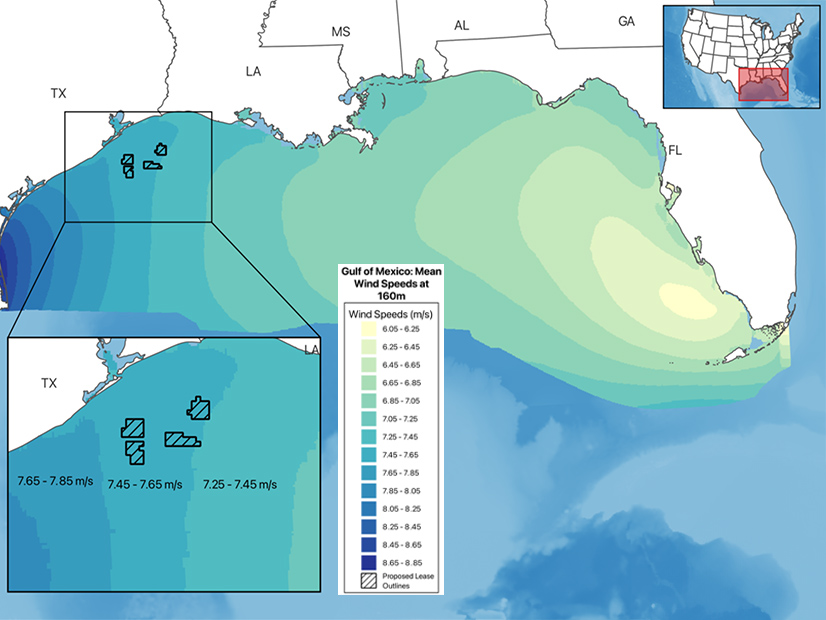
A National Renewable Energy Laboratory report offers insight on transmission infrastructure needs for future offshore wind development in the Gulf of Mexico.
NREL said the needs are significant but have not been researched previously.
Offshore wind development in the Gulf presents challenges beyond those facing present-day efforts along the northeast U.S. coast. And developers so far have shown little willingness to meet those challenges — the Gulf wind lease auction planned for later this year was canceled for lack of interest.
But the Gulf is believed to hold 37% of the nation’s potential offshore wind generation capacity, and federal leaders hope to exploit it.
NREL’s report looks at some of the steps that would need to be taken well in advance of wind turbine construction so their megawatts of power could be brought ashore.
A key takeaway: The oil and gas industry already has infrastructure and personnel in the Gulf. Shared transmission systems and workforce could support offshore wind.
Also, about 18,000 miles of abandoned pipelines remain on the seabed and could be used to transmit clean hydrogen — generation of which is a potential use of offshore wind energy.
But the NREL report also suggests that offshore wind transmission planning in the Gulf is not so different from other regions: Planners will have to limit the impact of their projects on existing communities, industries and ecosystems while navigating local, state, federal and tribal regulations and sensibilities.
The report’s authors identify some gaps in existing planning and knowledge needed for buildout:
-
- RTOs and utilities have not incorporated Gulf of Mexico offshore wind power in their long-term transmission planning.
-
- Siting considerations for offshore wind transmission routing in the region have not been identified in published literature.
-
- Focused community and workforce engagement on stakeholder priorities has been lacking.
-
- Engagement and research would inform how offshore wind transmission would fit into the region’s energy generation portfolio and how it serves the needs of industries in the Gulf Coast states.
The NREL report recommends the Department of Energy and Bureau of Ocean Energy Management convene a Gulf Coast version of the Atlantic Offshore Wind Transmission Study workshop series they began hosting in 2022.
The Biden administration, as part of its push to build a new emissions-free power sector, envisions fixed-bottom wind turbines in shallower parts of the Gulf and floating turbines in deeper areas.
But slower average wind speeds punctuated by severe winds from hurricanes and tropical storms present a significant engineering challenge for designers of the wind turbines to be placed in the Gulf. (See Hurricane Threat to OSW Turbines Quantified.)
In 2023, the first of four planned Gulf wind energy area auctions drew only three bids from two bidders on one of the three areas offered. The single sale came at a rock-bottom price. (See Gulf of Mexico Wind Energy Auction Falls Flat.)
The planned 2024 auction drew early interest from only one potential bidder and was called off. (See BOEM Cancels Gulf of Mexico Wind Lease Auction.)
As the 2024 auction was heading to cancellation, however, another developer submitted an unsolicited request to BOEM for two other lease areas off the Texas coast.
And Louisiana has been advancing offshore wind development in state waters closer to shore. The Climate Action Plan developed during the administration of Gov. John Bel Edwards (D) set a goal of 5 GW of offshore wind capacity by 2035, and the state signed agreements with two developers in late 2023, during the closing days of his administration.
A previous NREL study identified 25 plausible points of interconnection for offshore wind export cables but concluded that, as in other regions, many of them would need significant upgrades to handle gigawatt-scale injections.
The new NREL report was funded by the DOE’s Wind Energy Technologies Office and Grid Development Office.


